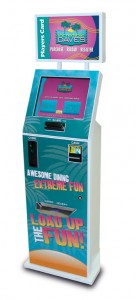The remarkable technological journey of Embed Playsafe


From relatively humble beginnings servicing its home market of Australasia, through just four members of staff, Embed has grown into a truly international supplier with offices in four major territories and over 60 members of staff worldwide. During a short space of time, the supplier has achieved an exceptional amount of success, racking up over 1,000 system installations at a global level.
Born out of the Timezone/LAI group, which has been involved in the pay-to-play amusement industry since the late 50s, Embed has a long pedigree in the industry and a huge amount of knowledge behind it. Coming out of an operations business has almost certainly assisted Embed founder Adam Steinberg and its growing team in understanding the individual needs of the operator, even if they did shy away from this association in the beginning.
“In the early days, when we were marketing the product we played down the operating side of the business as we were worried that customers would see us as potential competition and not want to do business with us,” says Steinberg. “It wasn't until we really started getting some traction in the US and Merrik Keller joined us as sales manager, that we realised we were missing a trick. We soon realised that we should be telling everyone that in fact we are one of the biggest operators of debit cards in the world, as potential customers value that experience.”
The opening of the US office in 2006 under the leadership of Mark Easte was a major milestone in the company's history so far. As a small company coming out of Australia, Embed realised that in order to compete, it had to establish itself physically and commit to the US - today it is Embed's biggest market.
At the same time Embed also launched its Color Glo card reader, which revolutionised the industry and really changed the whole approach to debit card systems. Adding the entertainment factor to what is a pretty utilitarian process of payment was something completely new to the industry and showed that the process can be fun as well as a way of communicating with the customer. “This was a very significant moment for us and gave us a huge leapfrog ahead of the competition,” says Steinberg.
This feature can be found in full in the November 2011 issue of InterGame magazine.

